 "ttyymmnn" (ttyymmnn)
"ttyymmnn" (ttyymmnn)
05/31/2016 at 12:35 • Filed to: planelopnik, planelopnik history
 8
8
 3
3
 "ttyymmnn" (ttyymmnn)
"ttyymmnn" (ttyymmnn)
05/31/2016 at 12:35 • Filed to: planelopnik, planelopnik history |  8 8
|  3 3 |
Welcome to This Date in Aviation History , getting you caught up on milestones, important historical events and people in aviation from May 28 - May 31.
!!! UNKNOWN CONTENT TYPE !!!
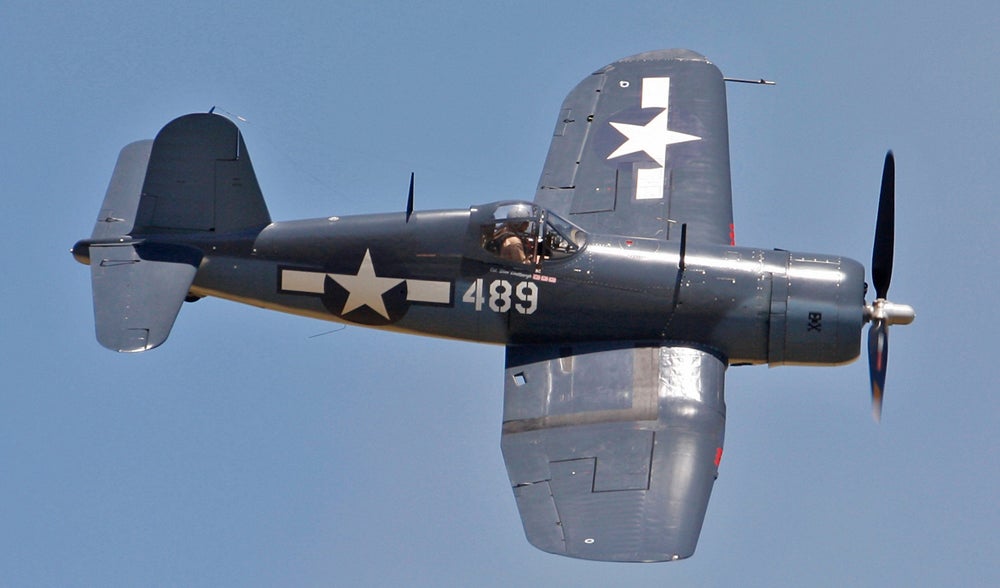
May 29, 1940 – The first flight of the Vought F4U Corsair. In the world of a fighter pilot, speed is life. So when the US Navy Bureau of Aeronautics (BuAer) requested proposals for a new single-engine fighter in early 1938, they stipulated that the fighter must provide the maximum speed obtainable, and that meant that it would have to be fitted with the most powerful engine available. And the biggest propeller. Following the unsuccessful Vought V-141 and V-143 (which were actually developed from an aircraft originally designed by Northrop), design team leader Rex Beisel took the same basic design of the earlier aircraft but made it considerably larger, and gave the prototype XF4U-1 a prototype 18-cylinder !!!error: Indecipherable SUB-paragraph formatting!!! twin row radial engine, marking the first time that the Double Wasp, an engine would go on to power some of the most iconic military aircraft in history, was fitted in an aircraft. In the early Corsair, the Double Wasp provided 1,805 hp and, when mated with the largest propeller ever fitted on a fighter up to that time, the Corsair became the first single-engine US fighter to exceed 400 mph in level flight. And it was the large propeller that gave the Corsair its iconic inverted gull wing. The shape of the wing actually had nothing at to all do with aerodynamics or performance; rather, the bend in the wing was to ensure clearance for the huge propeller and allow for shorter landing struts. The fully retractable !!!error: Indecipherable SUB-paragraph formatting!!! were a first for a US Navy fighter, and the anhedral portion of the wing also housed the Corsair’s oil coolers. By the time the F4U-1 entered production, some significant changes had taken place in the design. The original armament of two .30 caliber machine guns in the engine cowling and two .50 caliber machine guns in the wings gave way to six .50 caliber guns in the wings. To make way for the guns, the cockpit was moved aft and the wing fuel tanks were relocated to larger self-sealing tank ahead of the cockpit. This arrangement gave the Corsair its recognizable long nose, and preserved the aircraft’s center of gravity. A more powerful Double Wasp engine now gave the Corsair 2,000 hp. Later production models added water injection for still more power, a plexiglass canopy, and a raised seat to aid visibility over the long nose. But even with the improved visibility, the pilots still had trouble seeing over the nose during carrier landings, and led to the Navy’s initial refusal to accept the Corsair for carrier operations. It wasn’t until the British devised a turning landing procedure that allowed the pilot to see the deck until the last part of the landing pattern that the Navy accepted it as a carrier fighter. Until the landing issues were solved, the Navy already had the !!!error: Indecipherable SUB-paragraph formatting!!! (which was powered by the same Double Wasp engine), so the Corsair became the primary weapon of land-based US Marine Corps units, who flew the F4U with devastating effectiveness in the Pacific Theater, where it became known to the Japanese as “Whistling Death.” Marine Corps pilots also proved that the Corsair could be an effective ground attack platform, particularly in the !!!error: Indecipherable SUB-paragraph formatting!!! mission (CAS) in support of Marine landing forces. While many WWII fighters were retired at the end of the war in favor of new turbojet powered fighters, the Corsair’s speed, power and range ensured its continued Navy and Marine service. The Corsair saw extensive action in the Korean War, where it was used primarily in the CAS role and, though outclassed by the new Russian jet fighters, Marine Corsair pilot Capt. Jesse Folmar managed to shoot down a !!!error: Indecipherable SUB-paragraph formatting!!! . The Corsair proved to be a robust yet flexible platform, and no less than 16 variants were developed throughout its service life, including cannon armament, a wing-mounted radar pod for night fighting, and the addition of superchargers. Over 12,500 Corsairs were built between 1942-1953, the longest production run for any American piston-powered fighter, so many that Vought had to enlist the aid of Goodyear and Brewster to help build the fighter during the war. Of that number, !!!error: Indecipherable SUB-paragraph formatting!!! remain airworthy or under restoration. (Photo by the author)
!!! UNKNOWN CONTENT TYPE !!!
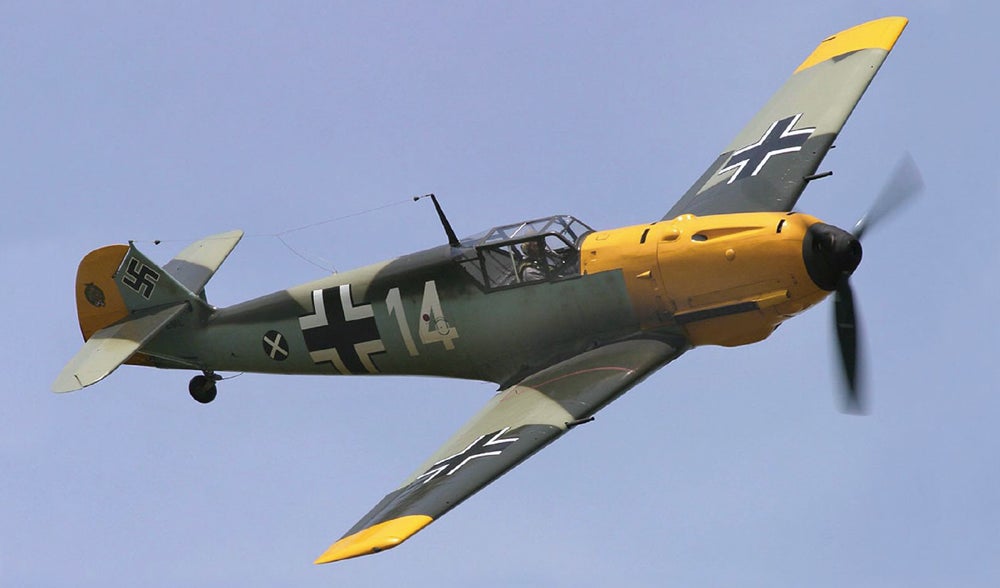
May 29, 1935 – The first flight of the Messerschmitt Bf 109. In the years approaching WWII, Germany was working all out to regenerate its air force following the harsh restrictions placed on the country by the !!!error: Indecipherable SUB-paragraph formatting!!! that ended WWI. Though Germany was technically restricted from creating any new weapons of war, civilian designers nevertheless forged ahead with new designs that could easily take on fighting roles, and by the time the Bf 109 took its first flight, it heralded the end of the biplane fighter and the ascendancy of the monoplane fighter. The first truly modern fighter of its day, the Bf 109 featured the first operational use of all-metal !!!error: Indecipherable SUB-paragraph formatting!!! construction, retractable landing gear, and an enclosed cockpit. The Bf 109 (often erroneously called the Me 109) was developed as one part of a four-part requirement for new military aircraft put forth by the !!!error: Indecipherable SUB-paragraph formatting!!! (Ministry of Aviation) in 1933. It called for a single-seat fighter with a top speed of 250 mph and a rate of climb that would allow the fighter to reach 20,000 feet in a minimum of 17 minutes. Arado, Heinkel, Focke-Wulf and the !!!error: Indecipherable SUB-paragraph formatting!!! , led by !!!error: Indecipherable SUB-paragraph formatting!!! , all submitted designs, with the Messerschmitt aircraft being declared the winner, due in large part to its higher speed and better rate of climb and superior diving characteristics. Messerschmitt’s new fighter would be powered by the new !!!error: Indecipherable SUB-paragraph formatting!!! inverted V-12 engine but, not without a touch of irony, the prototype’s first flight was powered by a British-made !!!error: Indecipherable SUB-paragraph formatting!!! , mounted vertically, since the Jumo was not yet ready. The use of an inverted engines provided some benefits, such as improved visibility over a narrower nose, ease of maintenance in the field, and lower mass to improve handling. It also allowed for the placement of a cannon that fired through the propeller spinner, with the propeller itself turned by a series of gears. The Bf 109 was an immediate success, setting numerous speed records in the years leading up to the war, and a specially prepared Bf 109 set a speed record for piston aircraft that would stand until 1969. The Bf 109 saw its first action in the !!!error: Indecipherable SUB-paragraph formatting!!! (1936-1939), which the Luftwaffe used as a dress rehearsal for the coming invasion of Poland. Development of the 109 continued throughout the war, with refinements of the design to increase handling and the fitting of ever more powerful Jumo engines to increase speed. Though more advanced fighters, such as the radial-engined !!!error: Indecipherable SUB-paragraph formatting!!! , would be introduced throughout the conflict, the Bf 109 remained the backbone of the Luftwaffe throughout the war, and proved to be a very effective fighter, particularly against more poorly trained Russian pilots on the Eastern Front. Bf 109 pilots accounted for more aerial victories than any other aircraft in the war, with the highest scoring ace in history, !!!error: Indecipherable SUB-paragraph formatting!!! , claiming 352 victories, most against Russia, and !!!error: Indecipherable SUB-paragraph formatting!!! , fighting against significantly better opponents in North Africa, scoring 154 victories. The 109 was widely exported to countries allied to Germany, and though most German aircraft were retired after the war, the 109 continued to serve foreign air forces, particularly the Swiss and Finnish air forces, who flew their 109s into the mid-1950s. By any metric, the Bf 109 was a remarkable fighter, but perhaps most telling is the sheer number of aircraft built. By the end of production, nearly 34,000 Bf 109s had been produced, making it the second-most produced combat aircraft in history, behind the Russian !!!error: Indecipherable SUB-paragraph formatting!!! . (Photo by D. Miller via !!!error: Indecipherable SUB-paragraph formatting!!! )
!!! UNKNOWN CONTENT TYPE !!!

May 30, 1958 – The first flight of the Douglas DC-8. By the end of WWII, the turbojet engine was clearly the future of aviation. But Douglas Aircraft, who had a commanding lead in the production of piston-powered airliners reaching all the way back to the early 1930s with the !!!error: Indecipherable SUB-paragraph formatting!!! (DC stands for Douglas Commercial), still saw no need to rush headlong into the new technology. Douglas was still well-placed in the airliner market with their extremely successful !!!error: Indecipherable SUB-paragraph formatting!!! , and the !!!error: Indecipherable SUB-paragraph formatting!!! , its final piston airliner, was still in development. !!!error: Indecipherable SUB-paragraph formatting!!! had produced the world’s first turbojet-powered airliner in the !!!error: Indecipherable SUB-paragraph formatting!!! , but a series of fatal crashes led airlines to shy away from the new power plant, even though the Comet crashes were traced to metal fatigue around its large, square windows and had nothing at all to do with its turbojet engines. But in 1949, Douglas sensed the need for developing their own jetliner when !!!error: Indecipherable SUB-paragraph formatting!!! rolled out the !!!error: Indecipherable SUB-paragraph formatting!!! (Dash 80), an aircraft that was designed for the US Air Force as a jet-powered aerial tanker that would eventually be adopted as the !!!error: Indecipherable SUB-paragraph formatting!!! . Despite its military designation, the implications for the future of airliner design were clear. In 1952, Douglas began their own studies for the development of a four-engine jetliner, also hoping to compete for a lucrative defense contract. Ultimately left out of the tanker competition, Douglas moved ahead with their airliner design, and announced their new airliner in 1955. Following consultations with the airlines, they modified their prototype to allow for six-abreast seating and offered four different versions of the jetliner, though the variants only offered options for different engine or fuel loads. Douglas refused to offer the DC-8 in any other fuselage lengths, a decision that would ultimately hamper sales when pitted against Boeing and their 707. The DC-8 entered service with Delta Air Lines and United Airlines in 1959, though Douglas’ decision to limit production to a single fuselage size led the airlines to purchase similar but more flexible offerings from Boeing and !!!error: Indecipherable SUB-paragraph formatting!!! , who offered their !!!error: Indecipherable SUB-paragraph formatting!!! airliner. It wasn’t until 1965 that Douglas began offering a stretched DC-8, called the Super Sixty. The lengthened airliner could now accommodate up to 269 passengers, a mark that would not be surpassed until the arrival of the !!!error: Indecipherable SUB-paragraph formatting!!! in 1970. And even though the !!!error: Indecipherable SUB-paragraph formatting!!! is by far the most well-known airliner of the era, Douglas (now !!!error: Indecipherable SUB-paragraph formatting!!! following the merger of the two companies in 1967) would have the last laugh. While nearly twice the number of 707s and 720s were produced by Boeing, just 80 remained in service by 2002. The DC-8, however, which had proven to be an excellent cargo aircraft after its passenger-carrying days were over, could boast 200 aircraft still in service. And by 2013, 36 DC-8s were still in service worldwide. (Photo by Jon Proctor via !!!error: Indecipherable SUB-paragraph formatting!!! )
!!! UNKNOWN CONTENT TYPE !!!
Short Take Off
!!! UNKNOWN CONTENT TYPE !!!
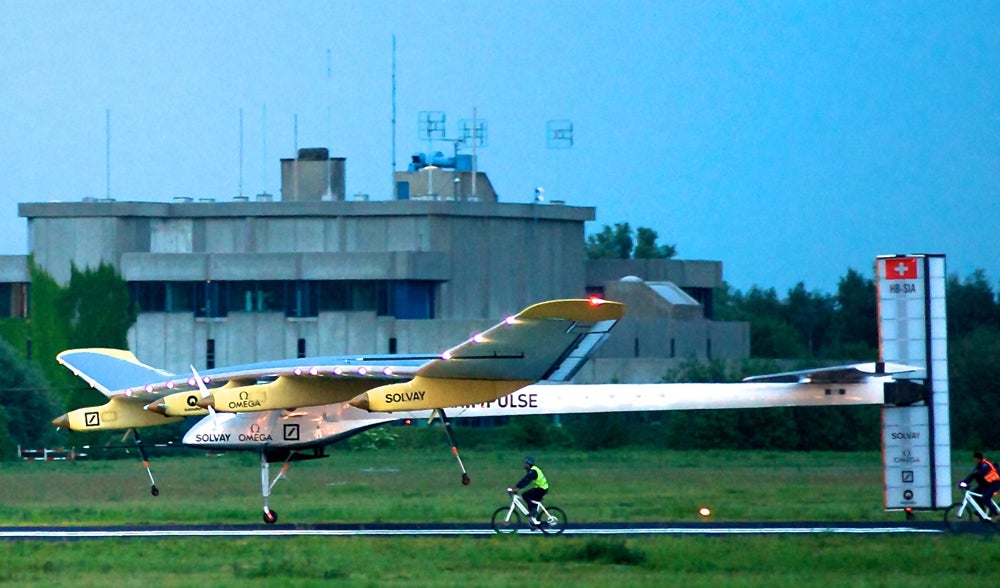
May 28, 2010 – The Solar Impulse 1 solar-powered aircraft makes its first flight powered by solar energy. !!!error: Indecipherable SUB-paragraph formatting!!! (HB-SIA) is a long-range, experimental aircraft that is seeking to demonstrate the viability of solar power for extended flight and to promote clean technologies, with the goal being a circumnavigation of the globe in an aircraft powered only by the sun. Following an 87-minute flight on April 2, 2010, the aircraft made its first entirely-solar powered flight, with the aircraft’s batteries being charged during the flight. The aircraft has been followed by Solar Impulse 2, which carries more solar cells and a more powerful engine. Departing Abu Dhabi in March of 2015, pilots André Borschenberg and Bertand Piccard, flying Solar Impulse 2, began an attempt at circumnavigation, and as of May 25, 2016 they are currently crossing the United States. (Photo by Brussels Airport via !!!error: Indecipherable SUB-paragraph formatting!!! )
!!! UNKNOWN CONTENT TYPE !!!
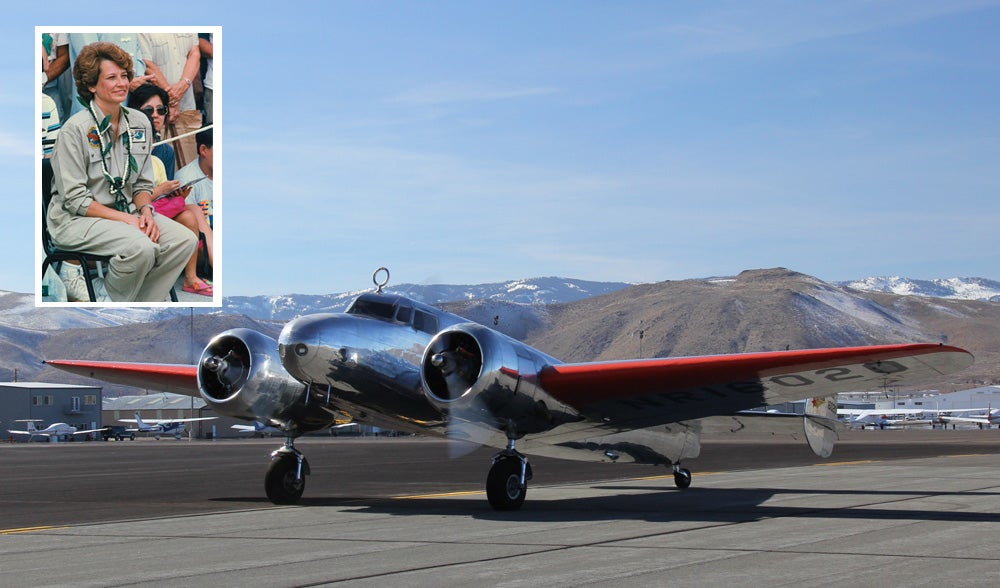
May 28, 1997 – Linda Finch completes a recreation of Amelia Earhart’s failed attempt to circumnavigate the globe . Finch, an aviatrix and businesswoman from San Antonio, TX, took off on March 17 in a restored 1935 !!!error: Indecipherable SUB-paragraph formatting!!! that had been prepared identically to Earhart’s plane. Her flight took 10 weeks to complete while flying legs of 8 to 18 hours at a time, stopped at 36 different locations in 18 countries, and covered approximately 26,000 miles. Finch’s Electra has been acquired by the !!!error: Indecipherable SUB-paragraph formatting!!! in Seattle, Washington where it will be displayed. (Author’s note: March 17 is the departure date for Earhart’s first attempt at circumnavigating the globe which ended in Hawaii following a takeoff accident. The second attempt, in which Earhart and copilot Fred Noonan disappeared, was begun on July 2, 1937.) (Finch photo by Frank Vargo via !!!error: Indecipherable SUB-paragraph formatting!!! ; Electra photo via !!!error: Indecipherable SUB-paragraph formatting!!! )
!!! UNKNOWN CONTENT TYPE !!!
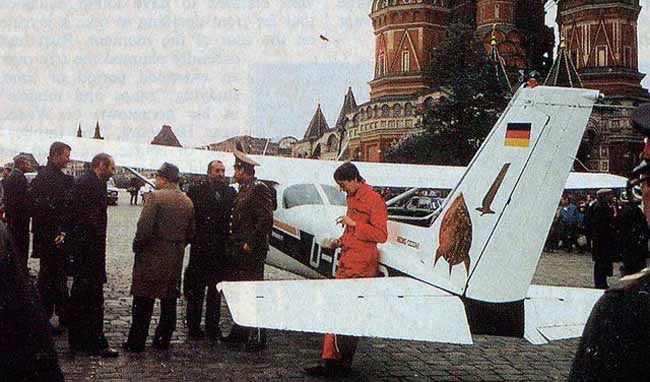
May 28, 1987 – Mathias Rust lands in Red Square. !!!error: Indecipherable SUB-paragraph formatting!!! , an 18-year-old aviator from West Germany with only 50 hours of flying time, hoped to hasten the end of the !!!error: Indecipherable SUB-paragraph formatting!!! by creating what he called an “imaginary bridge” between East and West. Departing from Hamburg on May 13 in a !!!error: Indecipherable SUB-paragraph formatting!!! modified to carry extra fuel, the inexperienced Rust flew first to the Faroe Islands, then Bergen, Norway, then Helsinki, Finland. Departing Helsinki on May 28, he told air traffic controllers he planned to fly to Stockholm, but soon after departure he turned his plane toward Moscow and deactivated the transponder. Rust’s plane was detected on Russian radars, and fighters were scrambled and missiles were targeted, but confusion reigned among the Russian air defenses and Rust flew on unmolested until he landed his Cessna on a bridge and taxied into the middle of !!!error: Indecipherable SUB-paragraph formatting!!! . In a way, Rust’s plan to help bring an end to the Cold War was successful, as the veneer of invincibility had been removed from the Russian military, and many of the old, entrenched Russian officers who bungled the interception of Rust’s plane were ousted by General Secretary !!!error: Indecipherable SUB-paragraph formatting!!! , helping to pave the way for reforms that would ultimately lead to the dissolution of the Soviet Union. (Photo via !!!error: Indecipherable SUB-paragraph formatting!!! )
!!! UNKNOWN CONTENT TYPE !!!
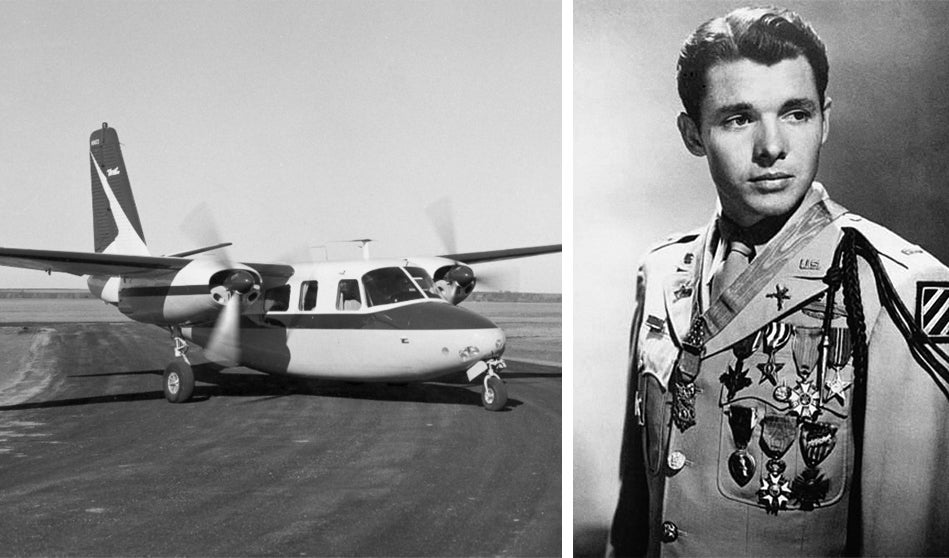
May 28, 1971 – WWII hero Audie Murphy is killed in a plane crash. Murphy was one of the most highly decorated American service members in WWII. For his heroism in battle, Murphy received !!!error: Indecipherable SUB-paragraph formatting!!! from the US Army, as wells as awards from the French and Belgian governments. Following the war, Murphy enjoyed a successful acting career, famously documenting his exploits in the 1955 film !!!error: Indecipherable SUB-paragraph formatting!!! . Murphy was a passenger in an !!!error: Indecipherable SUB-paragraph formatting!!! , and on the night of his death the plane was flying through rain and fog with zero visibility. The pilot, though experienced, was not rated for instrument flying, and was unfamiliar with the aircraft type. The plane crashed near Roanoke, Virginia, and the National Transportation Safety Board concluded that the pilot’s decisions to continue flying under !!!error: Indecipherable SUB-paragraph formatting!!! (VFR) in !!!error: Indecipherable SUB-paragraph formatting!!! (IMC) led to the crash. (Aero Commander—not accident aircraft—photo via !!!error: Indecipherable SUB-paragraph formatting!!! ; Murphy photo via US Army)
!!! UNKNOWN CONTENT TYPE !!!

May 29, 1951 – Capt. Charles Blair makes the first nonstop solo flight over the North Pole . After setting a speed record flying nonstop from New York to London at an average speed of 446 mph earlier in the same year, Blair set his sights on crossing the North Pole. Flying his !!!error: Indecipherable SUB-paragraph formatting!!! named Excalibur III , Blair flew from Bardufoss, Norway to Fairbanks, Alaska nonstop, a flight that covered 3,260 miles. For his flight, Blair was awarded the !!!error: Indecipherable SUB-paragraph formatting!!! , as well as the Gold Medal of the Norwegian Aero Club. His aircraft is now on display at the !!!error: Indecipherable SUB-paragraph formatting!!! in Virginia. Blair was killed in 1978 in the crash of a !!!error: Indecipherable SUB-paragraph formatting!!! he was piloting for Antilles Air Boats. (Photo by the author)
!!! UNKNOWN CONTENT TYPE !!!
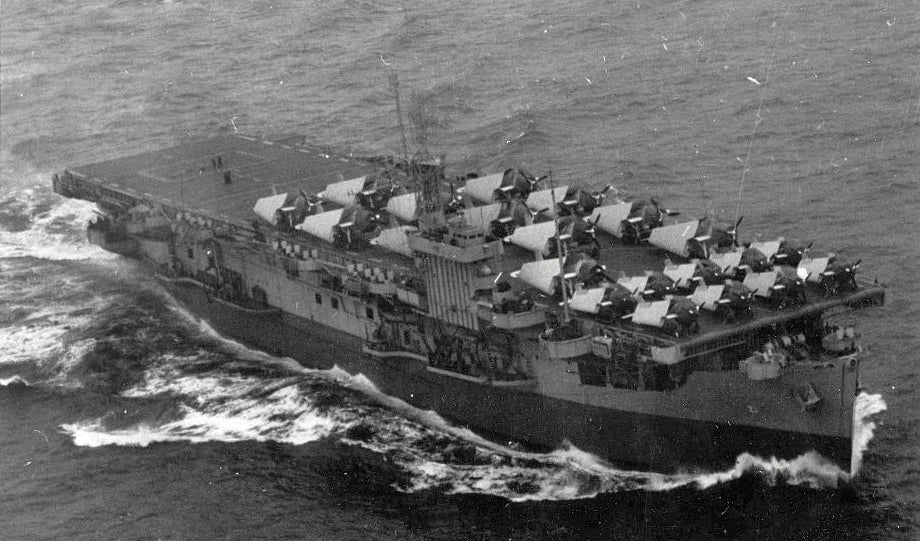
May 29, 1944 – The US aircraft carrier USS Block Island is sunk near the Azores. Block Island (CVE-21) was a !!!error: Indecipherable SUB-paragraph formatting!!! escort carrier commissioned on March 8, 1943 that entered service as an aircraft ferry, making two trips between New York City and Belfast. Afterward, she operated as part of a hunter-killer group, making four anti-submarine cruises and taking part in the sinking of four German U-boats. While sailing off the coast of the Azores, Block Island was struck by three torpedoes from !!!error: Indecipherable SUB-paragraph formatting!!! , which was in turn sunk by American destroyers. Only 6 sailors were lost in the attack, the other 951 were picked up by members of the battle group. Block Island was the only American carrier lost in the Atlantic during WWII. (US Navy photo)
!!! UNKNOWN CONTENT TYPE !!!
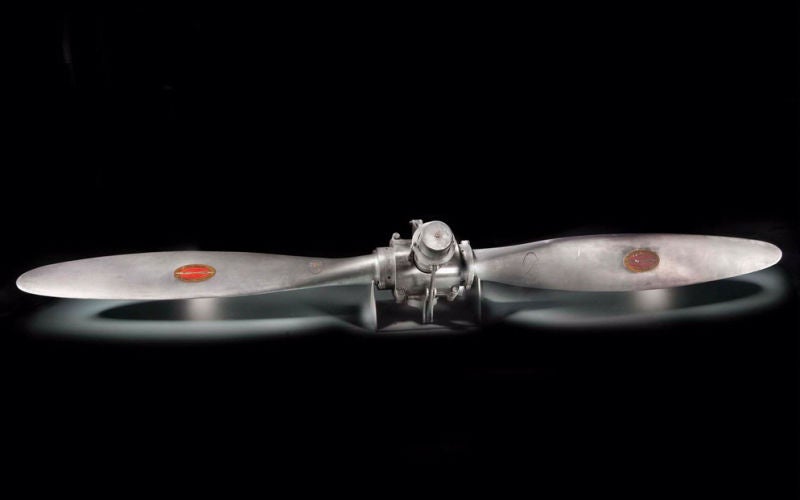
May 29, 1934 – The Collier Trophy is awarded to Hamilton Standard Propeller Company for development of the controllable-pitch propeller. The !!!error: Indecipherable SUB-paragraph formatting!!! (or variabile-pitch) is one in which the blade can be rotated along their long axis, altering the angle of attack of the blade as it passes through the air which helps the propeller to be more efficient. The hydraulically actuated propeller designed by !!!error: Indecipherable SUB-paragraph formatting!!! allowed the pilot to have direct control over the propeller, a significant advance in aircraft technology. For their work, the company received the !!!error: Indecipherable SUB-paragraph formatting!!! , which is awarded for “the greatest achievement in aeronautics or astronautics in America, with respect to improving the performance, efficiency, and safety of air or space vehicles, the value of which has been thoroughly demonstrated by actual use during the preceding year.” (Photo via the !!!error: Indecipherable SUB-paragraph formatting!!! )
!!! UNKNOWN CONTENT TYPE !!!
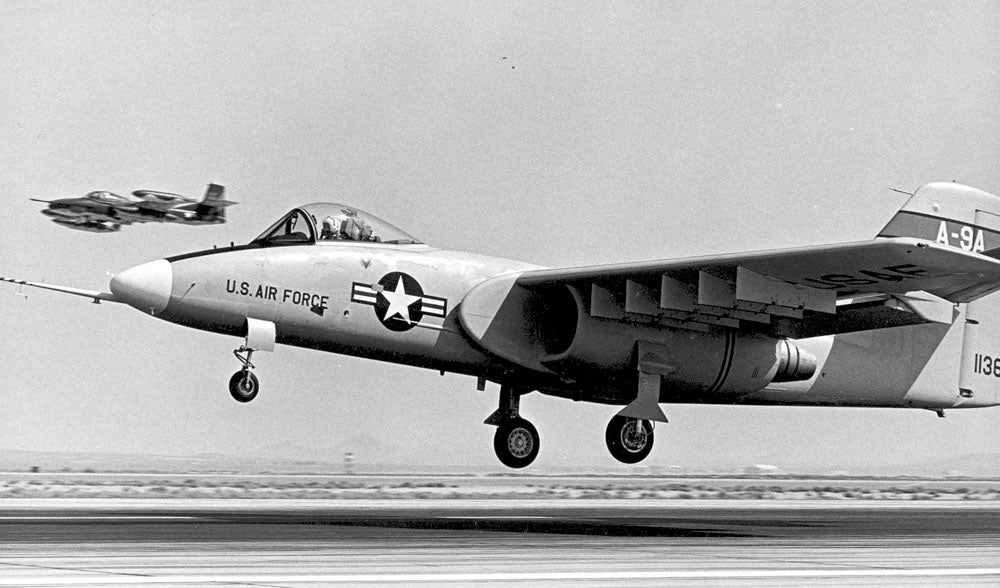
May 30, 1972 – The first flight of the Northrop YA-9,
the unsuccessful competitor against the Fairchild Republic YA-10 (the eventual
!!!error: Indecipherable SUB-paragraph formatting!!!
) for a dedicated close air support (CAS) aircraft. Both aircraft were designed around the
!!!error: Indecipherable SUB-paragraph formatting!!!
rotary cannon, though the Northrop prototype was armed with an
!!!error: Indecipherable SUB-paragraph formatting!!!
20mm gun, as the GAU-8 was still under development. While both designs showed promise, the YA-10 was selected after a fly-off between the two designs. Northrop built two prototypes, and after the competition both were given to NASA for further flight testing. One of the prototypes is on display at March Field Air Museum, and the other awaits restoration at Edwards Air Force Base in California.
(US Air Force photo)
!!! UNKNOWN CONTENT TYPE !!!
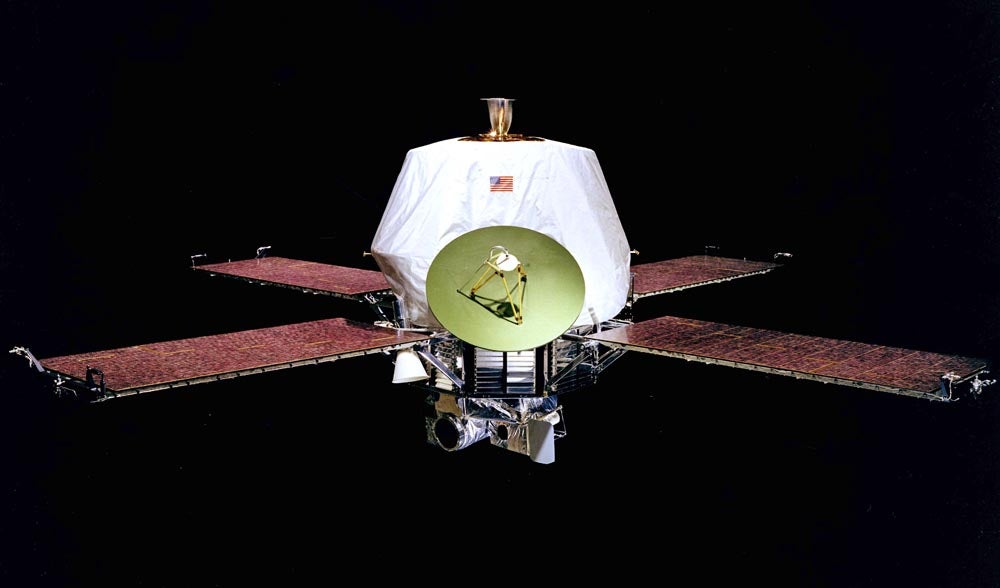
May 30, 1971 – The launch of Mariner 9, an unmanned space probe launched by NASA to explore Mars, thus becoming the first spacecraft to orbit another planet. Part of the !!!error: Indecipherable SUB-paragraph formatting!!! , Mariner 9 was launched from !!!error: Indecipherable SUB-paragraph formatting!!! atop an !!!error: Indecipherable SUB-paragraph formatting!!! rocket and reached Mars on November 14, 1971, only just beating similar Russian probes by less than a month. Mariner 9's mission was primarily to map the Martian surface, and also included a radiometer to detect volcanic activity on the surface of the planet. Before deactivation on October 27, 1972, Mariner 9 returned 7,329 images of the planet’s surface, as well as important data on the composition of the Martian atmosphere. Mariner 9 remains in Mars orbit, and is expected to fall from orbit and burn up in the Martian atmosphere sometime in 2022. (NASA photo)
!!! UNKNOWN CONTENT TYPE !!!
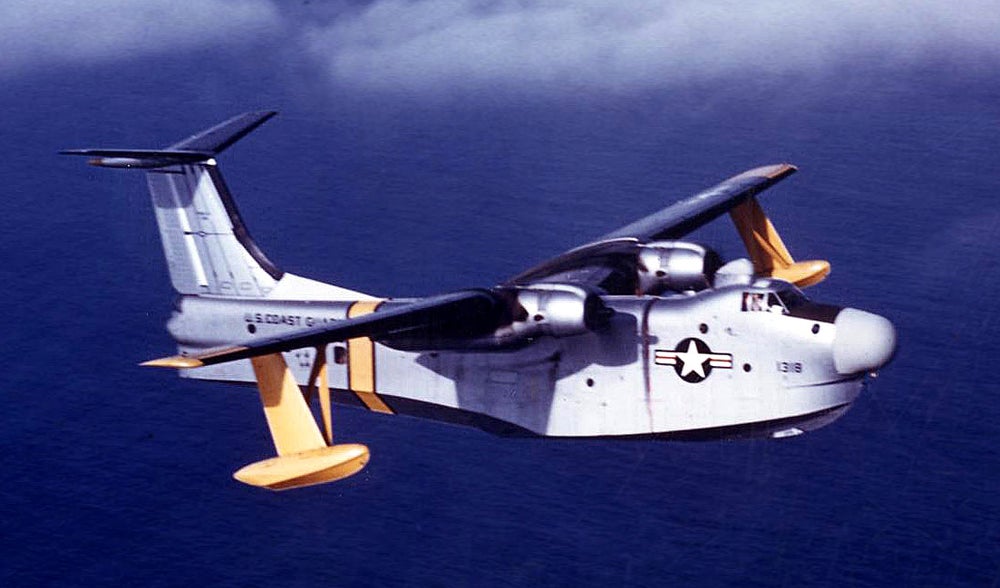
May 30, 1948 – The first flight of the Martin P5M Marlin, a flying boat developed by the !!!error: Indecipherable SUB-paragraph formatting!!! as a maritime patrol aircraft based on the earlier !!!error: Indecipherable SUB-paragraph formatting!!! . The Marlin was notable for its use of a !!!error: Indecipherable SUB-paragraph formatting!!! , which raised the engines higher above the surface of the water to keep them clear of the ocean spray. Later production models were modified with a T-tail to place the elevators higher above the water, and anti-submarine warfare variants were fitted with a !!!error: Indecipherable SUB-paragraph formatting!!! (MAD) boom to detect submarines. The Marlin entered service in 1952, and saw service in the Vietnam War, performing the last flying boat maritime patrols carried out by the US Navy. The Marlin also served with the US Coast Guard and French Navy, and was retired in 1967 after construction of 285 aircraft. (US Coast Guard photo)
!!! UNKNOWN CONTENT TYPE !!!
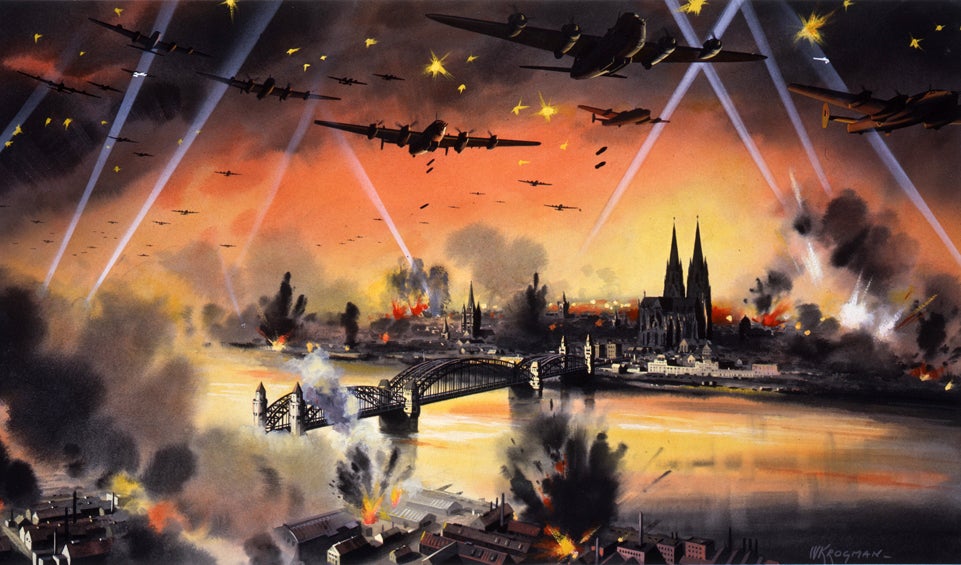
May 30, 1942 – The first bombing mission of Operation Millennium. During WWII, the Allies, particularly the US and Britain, were convinced of the effectiveness of heavy strategic bombing of German cities. Following the principles of !!!error: Indecipherable SUB-paragraph formatting!!! , it was believed that heavy bombardment of civilian centers would hasten the end of war by breaking the morale of the population. Gathering together every flyable bomber they could, the RAF launched !!!error: Indecipherable SUB-paragraph formatting!!! against the German city of Cologne, putting over 1,000 bombers in the air for a single mission. The streams of bombers flew over the city for 90 minutes, dropping 1,500 tons of bombs into the city center. More so-called 1,000 bomber raids were carried out against other cities, but strategic bombing never had the desired effect on civilian morale, and German factory production actually increased steadily throughout the war. (Illustration via !!!error: Indecipherable SUB-paragraph formatting!!! )
!!! UNKNOWN CONTENT TYPE !!!
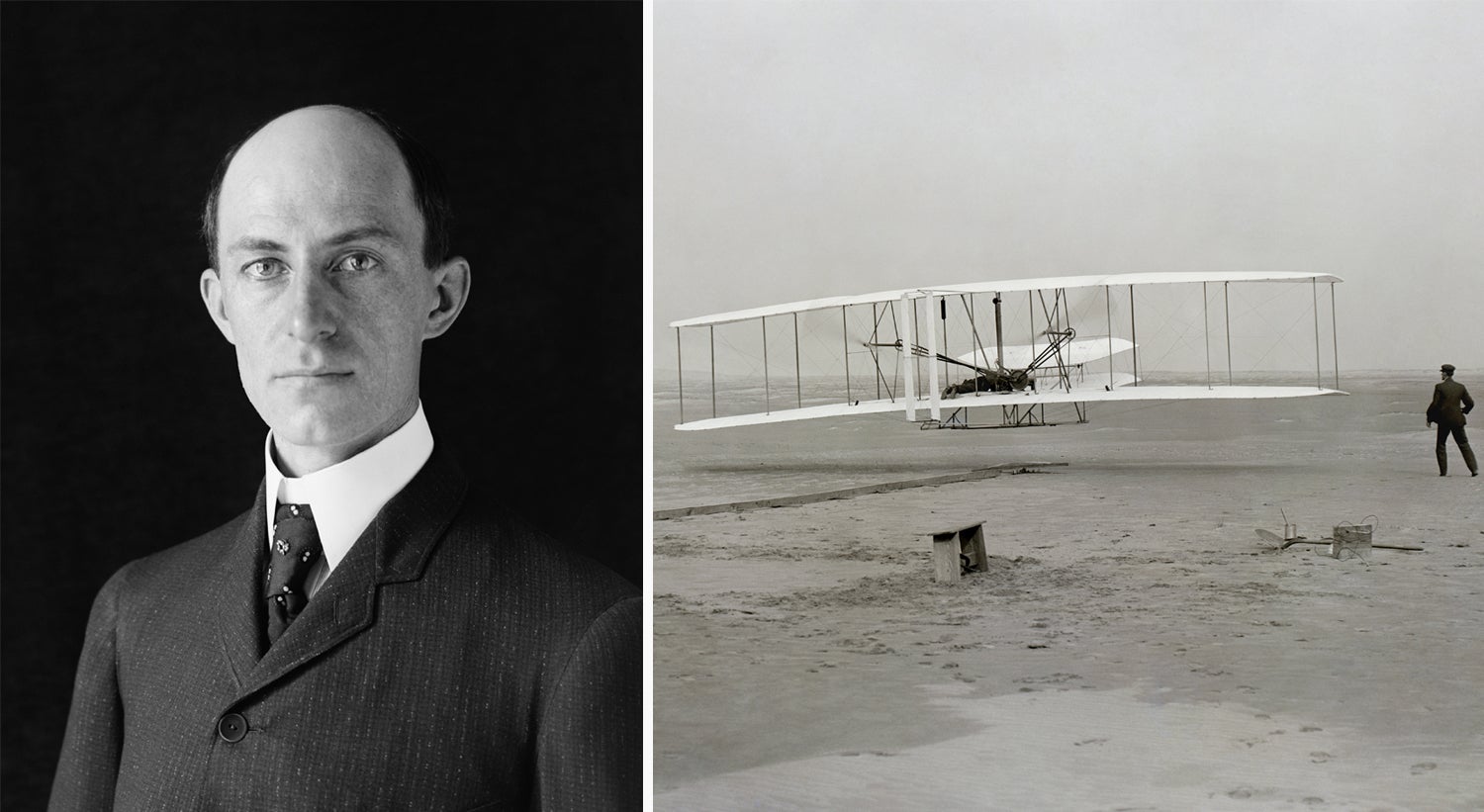
May 30, 1912 – The death of Wilbur Wright. Following the successful First Flight at Kitty Hawk, North Carolina in 1903, the Wright Brothers worked tirelessly to improve their machine, secure investors, and protect their intellectual property. They also had to establish the fact that they were first at powered flight, despite mounting skepticism at home and abroad. The brothers started the !!!error: Indecipherable SUB-paragraph formatting!!! in 1909, but Wilbur spent many of his final years shuttling between the US and Europe, fighting to protect their patents, and due perhaps to the strain of those trips, Wilbur fell ill with typhoid fever in May 1912 and died soon after at the age of 45. Following Wilbur’s death, Orville took over the leadership of their company, and died in 1948 at the age of 76, having lived from the first flight into the supersonic age of aviation. (Photos via the US Library of Congress)
!!! UNKNOWN CONTENT TYPE !!!
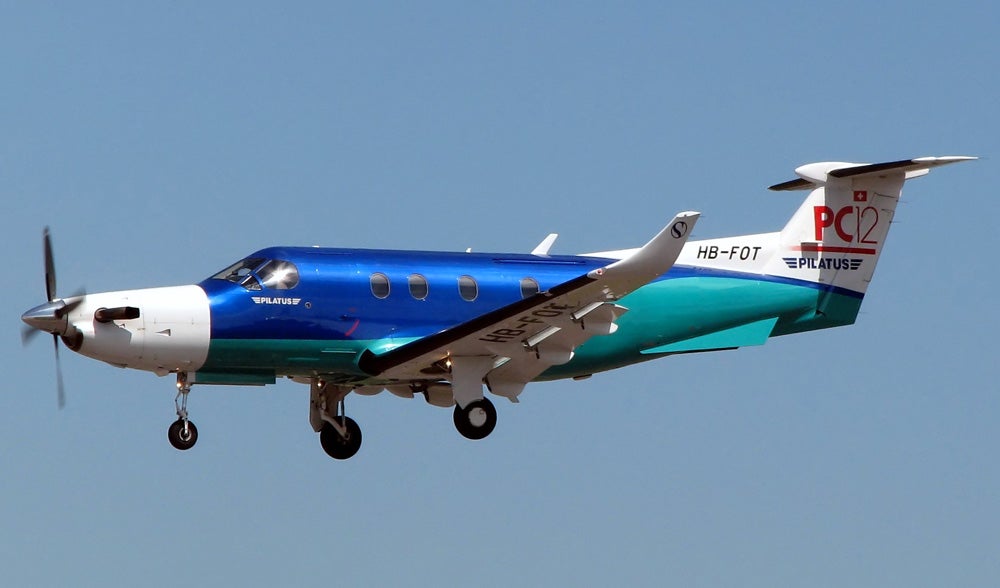
May 31, 1991 – The first flight of the Pilatus PC-12, a turboprop passenger and cargo aircraft designed primarily for corporate use and regional airlines. The PC-12 is powered by a single !!!error: Indecipherable SUB-paragraph formatting!!! turboprop that provides a cruising speed of 312 mph and a range of over 1,700 miles with a full complement of 9 passengers. The PC-12 has proven to be a tremendous success, and is the best selling pressurized single-turbine aircraft in the world, with over 1,300 hundred built. The aircraft remains in production. The bulk of sales have been to the civilian market, though the PC-12 does serve government agencies and militaries around the world, including the US Air Force, where it is known as the U-28A. (Photo via !!!error: Indecipherable SUB-paragraph formatting!!! )
!!! UNKNOWN CONTENT TYPE !!!
Recent Aviation History Posts
!!! UNKNOWN CONTENT TYPE !!!
!!! UNKNOWN CONTENT TYPE !!!
!!! UNKNOWN CONTENT TYPE !!!
!!! UNKNOWN CONTENT TYPE !!!
If you enjoy these Aviation History posts, please let me know in the comments. And if you missed any of the past articles, you can find them all at !!!error: Indecipherable SUB-paragraph formatting!!! .
!!! UNKNOWN CONTENT TYPE !!!
 f86sabre
> ttyymmnn
f86sabre
> ttyymmnn
05/31/2016 at 18:34 |
|
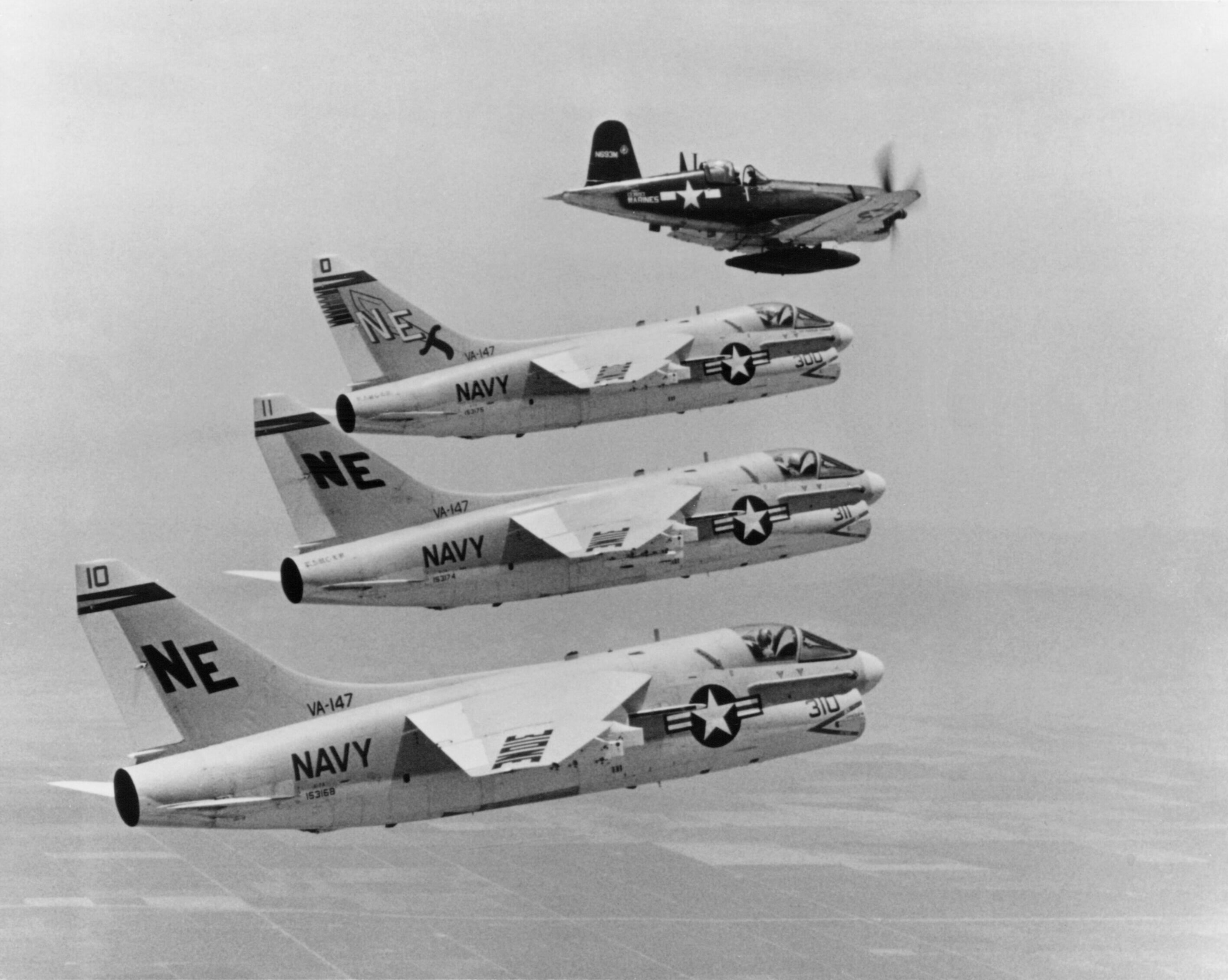
Mmmmm, Corsair's.
 ttyymmnn
> f86sabre
ttyymmnn
> f86sabre
05/31/2016 at 18:37 |
|
I saw that picture when I was writing this post and made a separate post just for this ridiculously awesome photo. It’s really amazing to see what happens when everything just comes together at the same time. The Corsair was—and still is—an incredible bird.
 Turbineguy: Nom de Zoom
> ttyymmnn
Turbineguy: Nom de Zoom
> ttyymmnn
06/02/2016 at 10:18 |
|
Love the PC-12. I flew one for a charter company a few years back. It's a solid airplane that can do damn near anything.